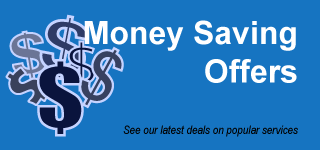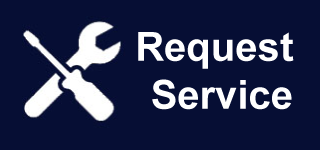In September, We went to a gathering on the best way to assist low-income individuals improve use of services that are financial. I discovered myself sitting close to an administrator from a big financial-services firm, whom explained he had recently pretended to be with no bank take into account an whole afternoon. He and a few individuals in his department was in fact delivered to check-cashing stores in places like Harlem to cash checks, deliver money, and settle payments, to have just exactly just what it could be want to live with no bank-account. He became animated while he pulled a file from their briefcase and revealed me the stack of receipts he’d accumulated inside the afternoon of residing in the side. He had been outraged by exactly how much it are priced at to deliver funds from Manhattan to Brooklyn, and that he had been obligated to invest an additional $1.50 to cover a bill. He had ended their puzzled about why anyone would use check-cashing services instead of banks day.
When I peered at payday loans online Pennsylvania direct lenders their receipts, we straight away respected one of those. It originated from RiteCheck, a check casher in Harlem and also the Southern Bronx where not long ago i struggled to obtain four months. You are personal viewpoint in the economic life of this urban bad, we invested eight hours per week being employed as a teller at RiteCheck. As an element of my research, In addition interviewed fifty RiteCheck customers and invested 30 days staffing a hotline run by the Virginia Poverty Law Center for folks difficulties that are experiencing payday loans—small, short-term, quick unsecured loans which are typically improvements on the borrower’s paycheck. I arrived far from my experiences with a tremendously various take regarding the dilemma of use of monetary solutions than my new buddy.
There were a large amount of reports recently from the growing variety of individuals without bank reports, as well as on those people who have reports but continue using alternate services that are financial as payday advances. All of this has convinced policy manufacturers and consumer that is many that low- and moderate-income individuals are victims of “financial exclusion.” They will have therefore focused on going these individuals to banking institutions.
The amounts of “unbanked” and “underbanked” folks are certainly growing. Seventeen million individuals nationwide are unbanked, up from ten million in 2002; forty-three million are underbanked. In really areas that are low-income the Southern Bronx, where We worked, over fifty percent for the residents haven’t any banking account.
I had chose to act as a teller to know why low- and moderate-income individuals are selecting not to ever utilize banks, if they’re truly the option that is best. The clear answer ended up being astonishing: it turns out banking institutions tend to be costlier for poor people than check cashers along with other alternate solutions.
To know why, start thinking about loans of a small amount. People criticize payday advances due to their high percentage that is annual (APR), which range from 3 hundred % to six hundred percent. Payday lenders argue that APR may be the wrong measure: the loans, they do say, are created to be paid back in as low as fourteen days. Customer advocates counter that borrowers typically sign up for nine of the loans each and end up indebted for more than half of each year year.
Exactly what alternative do low-income borrowers have actually? Banking institutions have retreated from small-dollar credit, and lots of borrowers that are payday maybe maybe perhaps not qualify anyway. It takes place that banking institutions provide a de-facto short-term, high-interest loan. It’s called an fee that is overdraft. An overdraft is actually a short-term loan, and when it possessed a payment amount of a week, the APR for an average event could be over five thousand percent.
To make sure, payday financing is an evergrowing business, increasing from ten billion dollars in 2001 to almost thirty billion bucks this year. But People in america paid significantly more than that on overdraft charges last year: an archive thirty-eight billion dollars. (Banking institutions are permitted to charge checking-account clients, an average of, one hundred and $ 40 a day in overdraft costs.)
What’s more, most of the clients we interviewed told us that deficiencies in transparency at banks contributed to your expenses they incurred; it was found by them hard to anticipate whenever and whatever they could be charged. At RiteCheck & most other check cashers, on the other hand, the charges for every deal are usually presented on big illuminated indications that span the line of teller windows, just like the menu indication at a fast-food restaurant.
The Pew wellness Group recently analyzed 2 hundred and fifty kinds of checking records during the nation’s ten largest banks, and discovered that banking institutions’ checking-account disclosures are certainly not clear. These disclosures have actually, an average of, one hundred and eleven pages—more than “Romeo and Juliet.” One RiteCheck client, that has opened a banking account in past times, stated, “You also have issues with fees, you also have bounced checks, guess what happens after all? Checks that are belated.” Clients that they cannot keep extra money in their accounts to buffer these expenses like him live so close to the edge.
Interestingly, banks deposit funds into customers’ accounts only five times a but withdraw funds seven days a week, which makes planning difficult for those with no margin for error week.
It’s no coincidence that, throughout the period as soon as the range check cashers and payday loan providers is continuing to grow, banks have actually instituted a variety of brand brand new costs and raised existing charges on A.T.M. withdrawals, cable re re payments, debit-card replacement, and paper statements, among other services. Some of this is certainly an endeavor by banking institutions to produce up the revenue they destroyed as a consequence of legislation that clamped down on whatever they could charge for overdraft fees and debit-card swipe fees—fees that banking institutions charge stores for every single debit-card transaction. Banks anticipate to take eighty-five bucks to one hundred and fifteen dollars in annual costs from each account, and also this is specially tough to do when serving low- and moderate-income individuals.
Meanwhile, free checking records are getting to be harder to get. Just thirty-nine % of non-interest-bearing checking records had been free last year, down from seventy-six % last year. The common month-to-month service charge on checking accounts increased twenty-five per cent from 2010 to 2011.
Scientists plus the news have a tendency to make use of terms like sleazy, predatory, and abusive to explain check cashers and payday loan providers. Yet banking institutions are seldom described in comparable terms. They must be. The folks whom populate the unbanked and underbanked groups in many cases are creating a clear choice to utilize check cashers and payday loan providers as opposed to ( or additionally to) a bank. Not just a person that is single interviewed indicated a wish to be “more banked.” (There’s another explanation, because essential as the cost that is high of banking, that bad individuals eschew banks. As I’ve written during the Atlantic Cities, check-cashing clients trust their neighborhood check cashers alot more than they are doing banks. These clients appreciate the degree of solution they get, that they feel is missing in banking institutions.)
All of this generally seems to declare that many banking institutions, since they are presently configured, don’t do a job that is good of low-income clients. Banking institutions and look cashers have quite business that is different. Always check cashers are transaction-based organizations with low overhead; banking institutions need a deal that is great overhead due to the complexity of the business structure. Banking institutions, driven to maximise shareholder value, appear to think that serving customers that are low-income hurt their bottom lines, and so they may be appropriate.








